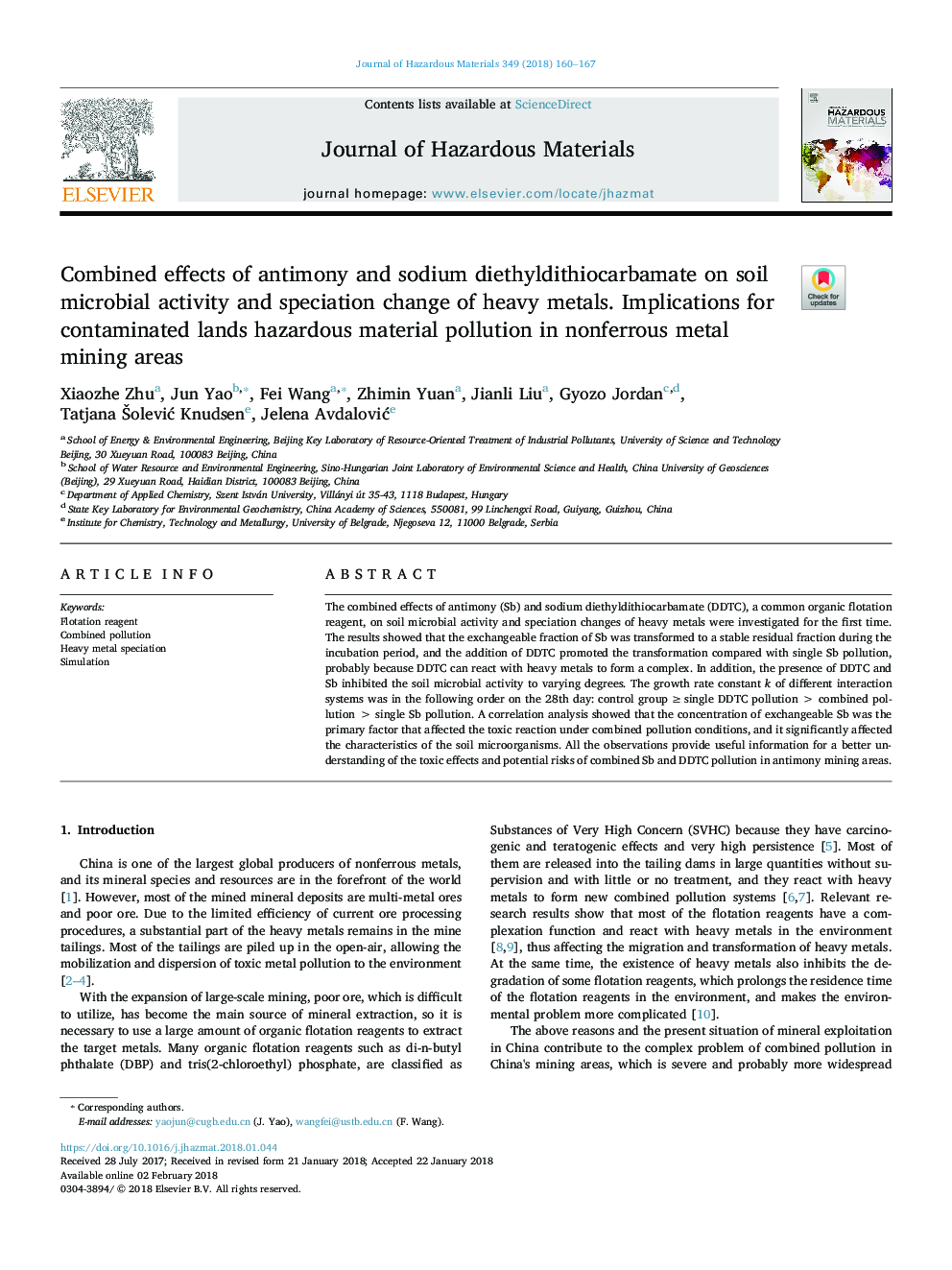| Article ID | Journal | Published Year | Pages | File Type |
|---|---|---|---|---|
| 6968863 | Journal of Hazardous Materials | 2018 | 8 Pages |
Abstract
The combined effects of antimony (Sb) and sodium diethyldithiocarbamate (DDTC), a common organic flotation reagent, on soil microbial activity and speciation changes of heavy metals were investigated for the first time. The results showed that the exchangeable fraction of Sb was transformed to a stable residual fraction during the incubation period, and the addition of DDTC promoted the transformation compared with single Sb pollution, probably because DDTC can react with heavy metals to form a complex. In addition, the presence of DDTC and Sb inhibited the soil microbial activity to varying degrees. The growth rate constant k of different interaction systems was in the following order on the 28th day: control groupâ¯â¥â¯single DDTC pollutionâ¯>â¯combined pollutionâ¯>â¯single Sb pollution. A correlation analysis showed that the concentration of exchangeable Sb was the primary factor that affected the toxic reaction under combined pollution conditions, and it significantly affected the characteristics of the soil microorganisms. All the observations provide useful information for a better understanding of the toxic effects and potential risks of combined Sb and DDTC pollution in antimony mining areas.
Related Topics
Physical Sciences and Engineering
Chemical Engineering
Chemical Health and Safety
Authors
Xiaozhe Zhu, Jun Yao, Fei Wang, Zhimin Yuan, Jianli Liu, Gyozo Jordan, Tatjana Å oleviÄ Knudsen, Jelena AvdaloviÄ,
